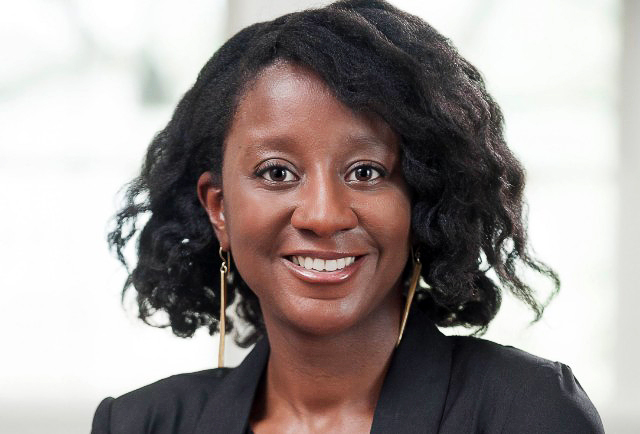Yesomi Umolu, exhibitions curator at the Logan Center for the Arts at the University of Chicago, was recently named artistic director of the 2019 Chicago Architecture Biennial. Her own history is as global at the biennial itself: born in Lagos, Nigeria, raised in London, with a deep resume that incorporates curatorial and educational experiences at museums and galleries all over the United States and Great Britain. She’s hit the ground running on the CAB, planning for the third CAB that promises an international influence with love for the city and citizens who host this three-month event.
You trained as an architect—how does that background influence what you’ll be doing with the biennial?
I trained as an architect and worked and practiced for a couple of years in an entry level position, and then decided that I liked the ideas around architecture but I wasn’t going to be a formally-practicing architect. My interest in artistic practices has always revolved around an interest in broader ramifications of the built environment.
You state that you have an interest in the global south. Could you expand on what that means?
I was a child of the diaspora; both London and Lagos are both cosmopolitan cities. I’ve always been interested in the trans-national flows of ideas and people and information because it really speaks to who I am as a person, but increasingly I think it speaks to who we all are as global citizens. Over the last couple of years, I've been returning to think about practices in West Africa, Brazil, Mexico City, and South Asia. When we talk about questions about architecture in new global centers that have emerged over the last twenty or thirty years, the large portion of them are in the global south. Those places have a lot to offer with respect to how we think about new spatial paradigms, and questions of urbanism and architecture.
How will you be using the next year to produce the next exhibition?
I benefit from the biennial being in its toddler years. With any major initiative like this, it's not just about doing the big public moment, it's about building out the substructure of the biennial. I’ll be working really closely with the staff as there's a really steep learning curve in terms of understanding our agenda with respect to education and public engagement. I'm excited to just have conversations with folks in and outside of the city to get to know their priorities and urgencies before I begin to try to encapsulate it into a concept. I want to be a vessel for good listening right now.
Johnston Marklee were not local artistic directors. Can you talk about your embeddedness in Chicago and how you hope the biennial will serve the city itself?
I think it's an interesting question about local and what that means. It means different thing to different people. When I came here I felt that Chicago was my city because we suit each other from a personality standpoint. I have a respect for the city, an appreciation of it, and like anybody else who calls this their hometown, want to make the biennial a really big occasion for the city to sing, and for us to present our best foot forward.
How do you hope non-architects or academics will engage with the 2019 CAB?
People will be coming here who are [architecture] enthusiasts or first time visitors to cultural spaces; or they’re people who have a cultural acumen that they've cultivated over years. Everyone comes together over their excitement around the arts, and you have to find a way to encapsulate and stir that excitement in the exhibition and projects that you do. As long as the excitement exists, then the work of translating to other people is far easier. I think that by virtue of my training as a curator, having the sensitivity to attend to the needs of different publics is something that is just part and parcel of my work.
What did you enjoy most about the last edition?
I enjoyed the photography exhibition that was curated throughout the biennial. It offered a different type of aesthetic experience other than the models and renderings, and a way to talk about parallel issues but through different media.
How can the biennial play a role that both solidifies aesthetic and intellectual endeavors but also participates in a dialogue about contemporary issues?
The biennial is a contemporary event that happens in a specific context of the now. And depending on your perspective, you can choose to interpret it in myriad different ways. We live in complex times, and the architectural discipline is grappling with a whole bunch of different issues and questions and addressing histories and futures. A biennial can't help but be contemporary and respond to the contemporary conditions. I know that as a biennial that's what it is set up to do: to have a hold of the historical and yet have strong ground to be propositional, to posit into the future.
What excites you about your new role?
I’m excited about the possibility of engaging different publics, to explore different platforms of production—from the exhibition to public programs to education, and the possibility of collaboration and partnerships. I’m excited about bringing folks to Chicago to understand what’s special about this place, and making an artistic proposition on architecture in this context.
A mandatory question: what is your favorite place in Chicago?
My favorite place is when you are in the midst of the city and you have the verticality of the skyscrapers alongside the river’s horizontality. There's a really interesting juxtaposition there. There are moments when you’re driving or walking around, and you find yourself in that meeting point. It’s always a nice experience to have whenever you're downtown.



